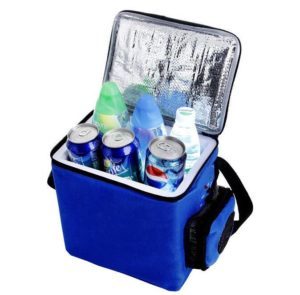 Description of the operation of the refrigerator. Compressor-type equipment produces cold due to the physical processes that occur with the refrigerant inside the device. The work cycle involves passing through several stages, each of which reveals the task of the individual elements of the refrigeration structure. The compressor drives the refrigerant (freon), which is a gas, through the system. Once in the evaporation chamber, freon goes into a gaseous state and takes heat from the products in the chamber.
Description of the operation of the refrigerator. Compressor-type equipment produces cold due to the physical processes that occur with the refrigerant inside the device. The work cycle involves passing through several stages, each of which reveals the task of the individual elements of the refrigeration structure. The compressor drives the refrigerant (freon), which is a gas, through the system. Once in the evaporation chamber, freon goes into a gaseous state and takes heat from the products in the chamber.
From there, it enters a spiral condenser, where it releases heat to the environment. Gradually, the aggregate state of the refrigerant again turns out to be liquid, its path again lies to the evaporator.
In the latter, a decrease in pressure occurs (the evaporator tubes have a larger diameter), which entails a transition to a gaseous state. This movement is repeated until the temperature controller gives a stop signal to the compressor. This will happen upon reaching the required temperature inside the refrigerator.
Important! The instructions for any refrigeration equipment indicate that the appliance must be located away from heat sources. Otherwise, a separate unit of equipment, for example, a capacitor, will not be able to cope with the task assigned to it, which can lead to a serious malfunction in the future.
If the refrigerator has two chambers, then the first thing is that Freon enters the freezer, after which it goes to another chamber, where there should not be a negative temperature. In more detail, the device will be disclosed below.
Refrigerator components
The content of the article
-
Refrigerator components
- What does the refrigerator engine consist of and how
- Freon and its role in the operation of the refrigerator
- What is a filter drier, its purpose
- What is a thermostat, what is its purpose for a refrigeration unit
What does the refrigerator engine consist of and how
 The compressor is the heart of the refrigerator. Inside it there is an electric motor, a piston and a valve system. When current is supplied, the crankshaft is driven by a motor. Thanks to the shaft, the piston starts reciprocating, which leads to the evacuation of freon vapor from the evaporator and the injection of hot refrigerant into the condenser.
The compressor is the heart of the refrigerator. Inside it there is an electric motor, a piston and a valve system. When current is supplied, the crankshaft is driven by a motor. Thanks to the shaft, the piston starts reciprocating, which leads to the evacuation of freon vapor from the evaporator and the injection of hot refrigerant into the condenser.
The valve system also participates in this process, opening and closing with each change in pressure. Units represented by rubbing parts are protected against wear by special oil.
Freon and its role in the operation of the refrigerator
The continuous movement of freon and a change in its state of aggregation allow the products to be cooled in storage chambers and frozen in a freezer. The circular motion of the gas occurs with a constant change in temperature. At high pressure, the substance boils and absorbs the heat of stored products. Then, having passed through the compressor, it enters the condenser, where it cools down.
Freon itself is odorless, characterized by transparency. For this reason, its leakage from the system cannot be detected directly. Indirectly, condensate in the refrigerator will indicate this, poor cooling of the products. The amount of freon can be found by the tag located on the compressor, usually in the system it is not more than 200 grams.
What is a filter drier, its purpose
 The filter drier looks like a small piece of metal tube rolled up at both ends. Inside the tube are small granules of sorbent (synthetic zeolite, for example). The input grid inside the filter prevents granules from entering the condenser, the output grid (finer) does not allow circulation through the system of solid particles. Some dehumidifiers are equipped with two inputs. The second is intended for service work, for example, when the system is evacuated after repair.
The filter drier looks like a small piece of metal tube rolled up at both ends. Inside the tube are small granules of sorbent (synthetic zeolite, for example). The input grid inside the filter prevents granules from entering the condenser, the output grid (finer) does not allow circulation through the system of solid particles. Some dehumidifiers are equipped with two inputs. The second is intended for service work, for example, when the system is evacuated after repair.
What is a thermostat, what is its purpose for a refrigeration unit
 Temperature regulators in modern refrigerators consist of two elements: a box and a tubular capillary. In the box are all the mechanisms that control the temperature regime of the cameras. It itself is a bellows, i.e. hermetically sealed tubular spring. The latter contracts and stretches depending on the pressure indicators.
Temperature regulators in modern refrigerators consist of two elements: a box and a tubular capillary. In the box are all the mechanisms that control the temperature regime of the cameras. It itself is a bellows, i.e. hermetically sealed tubular spring. The latter contracts and stretches depending on the pressure indicators.
The main purpose of the thermostat is to maintain the temperature set by the consumer. In the compressor device we are considering, the thermostat is responsible for turning the compressor motor on and off.

